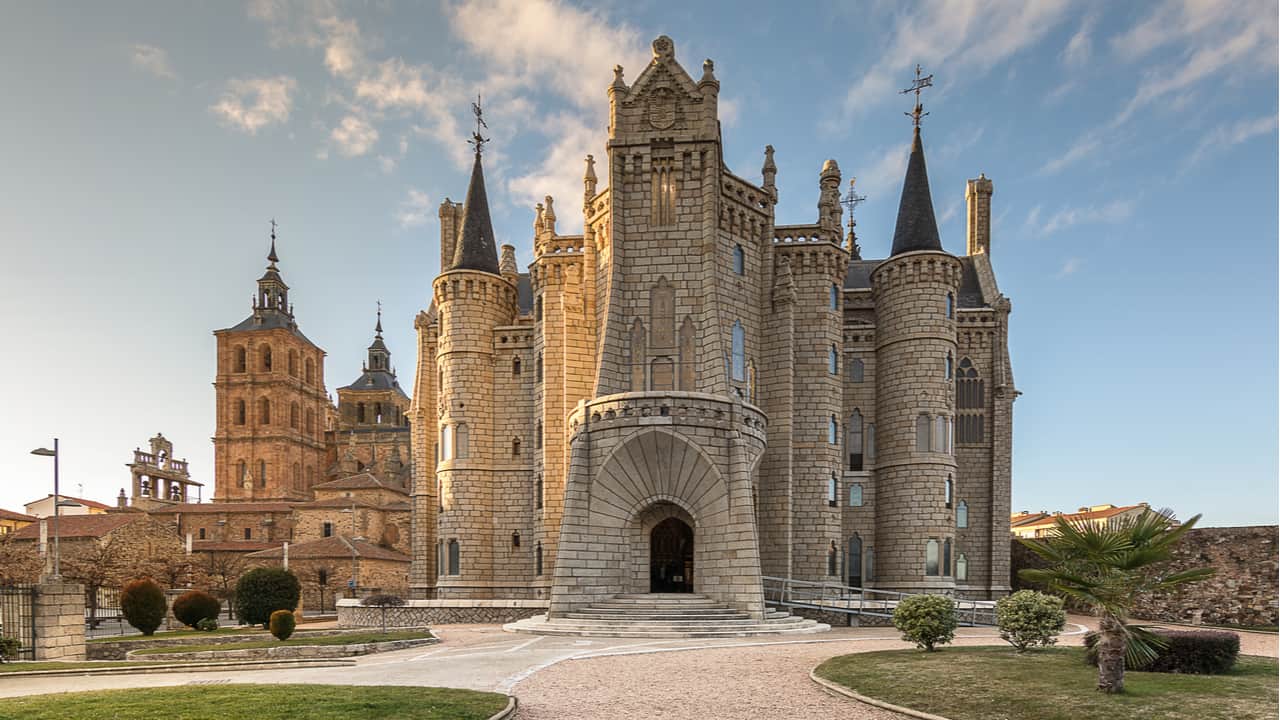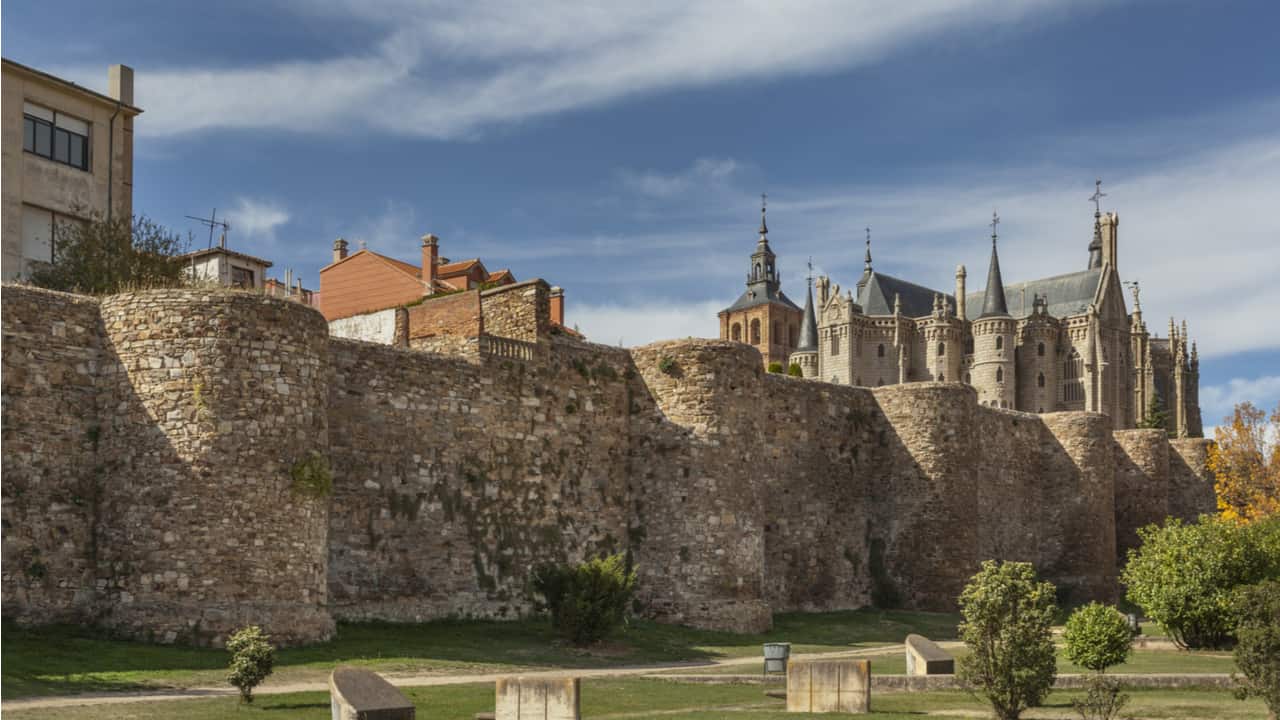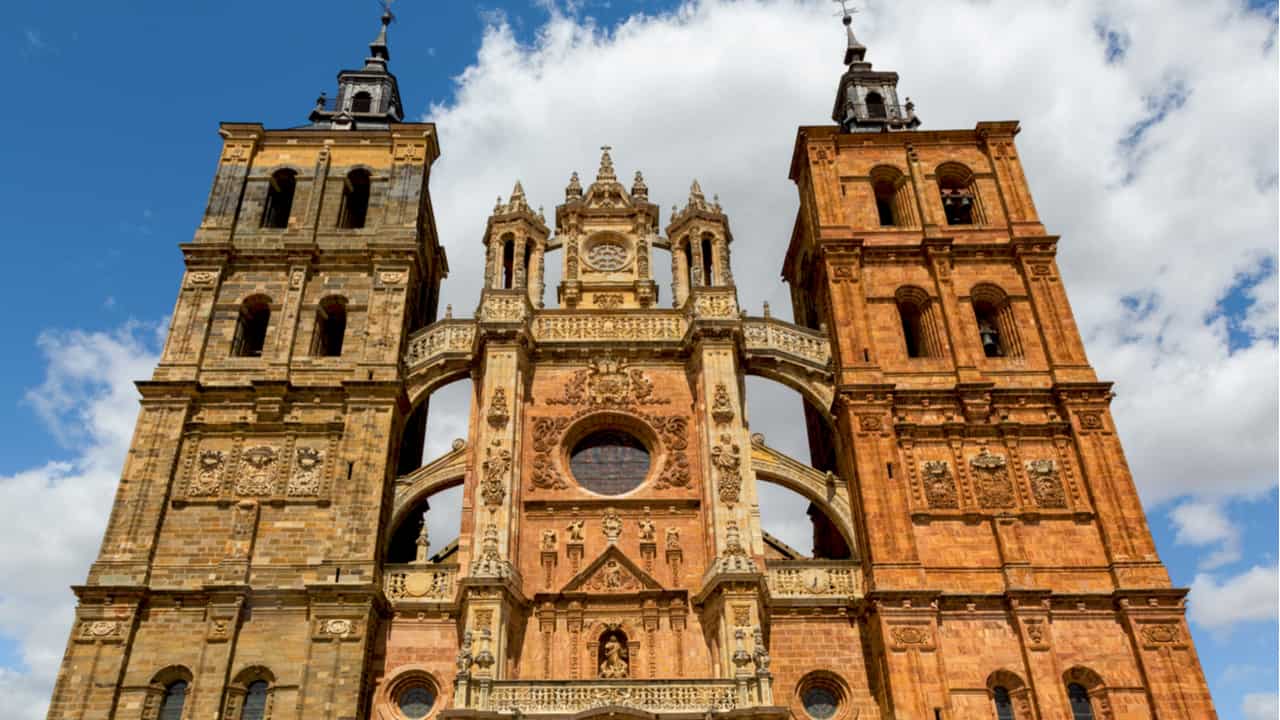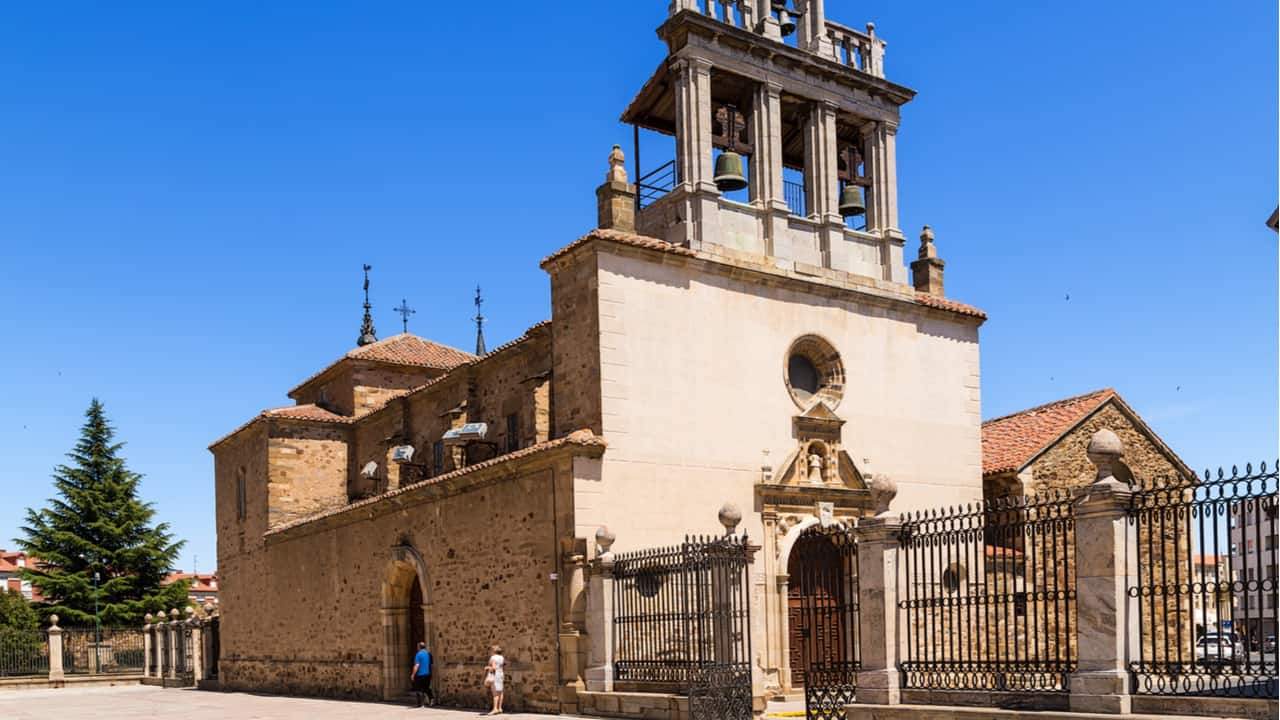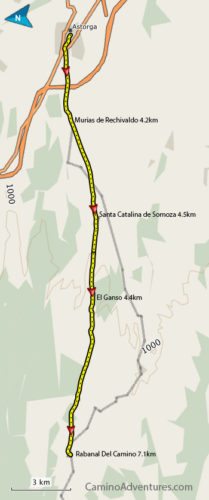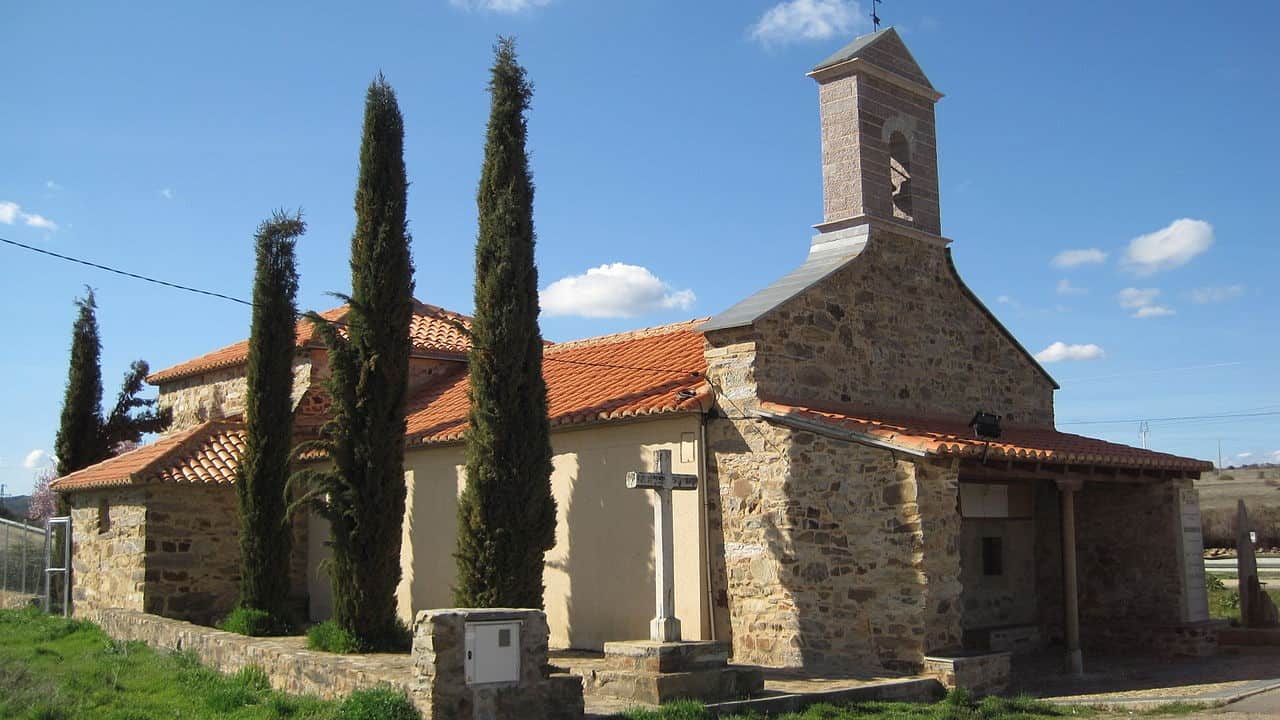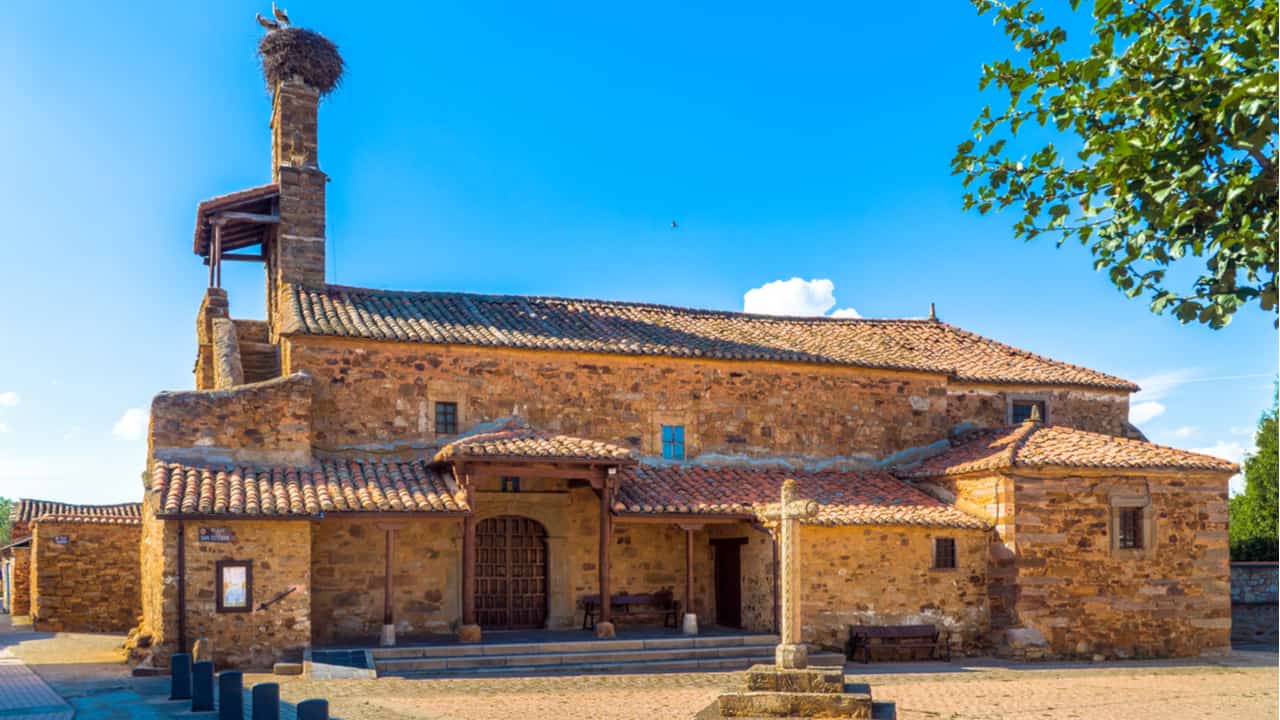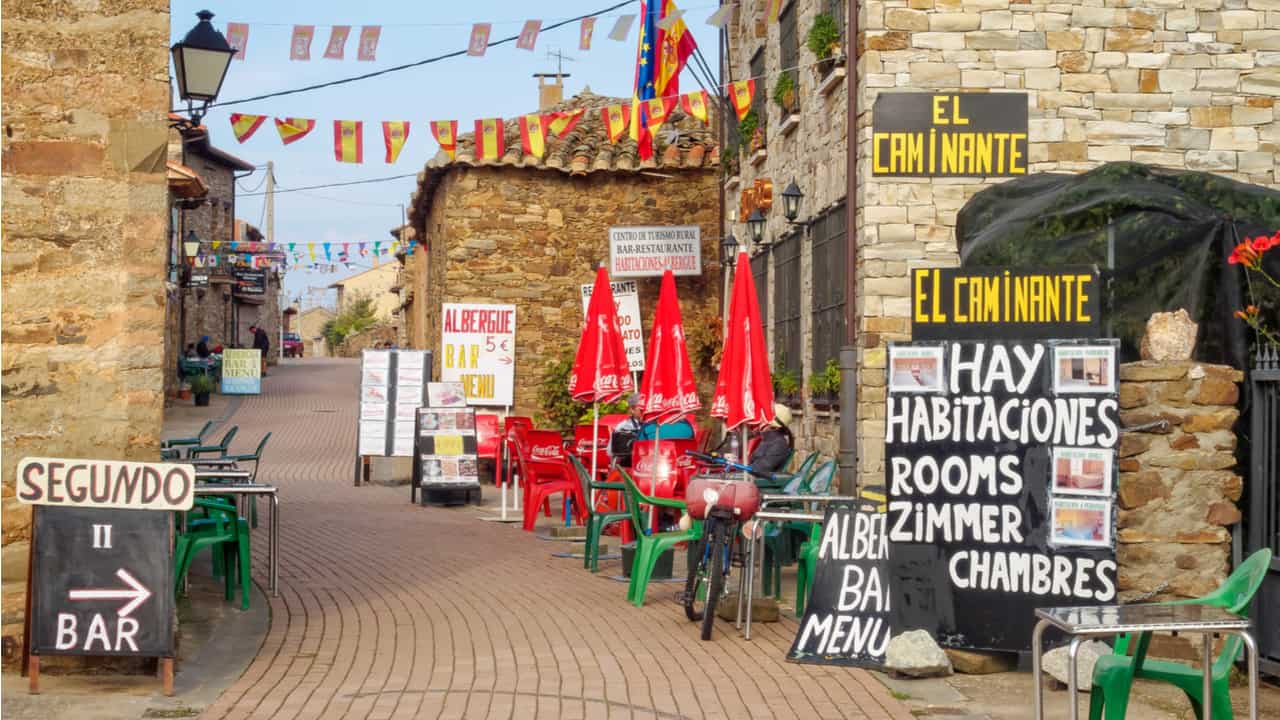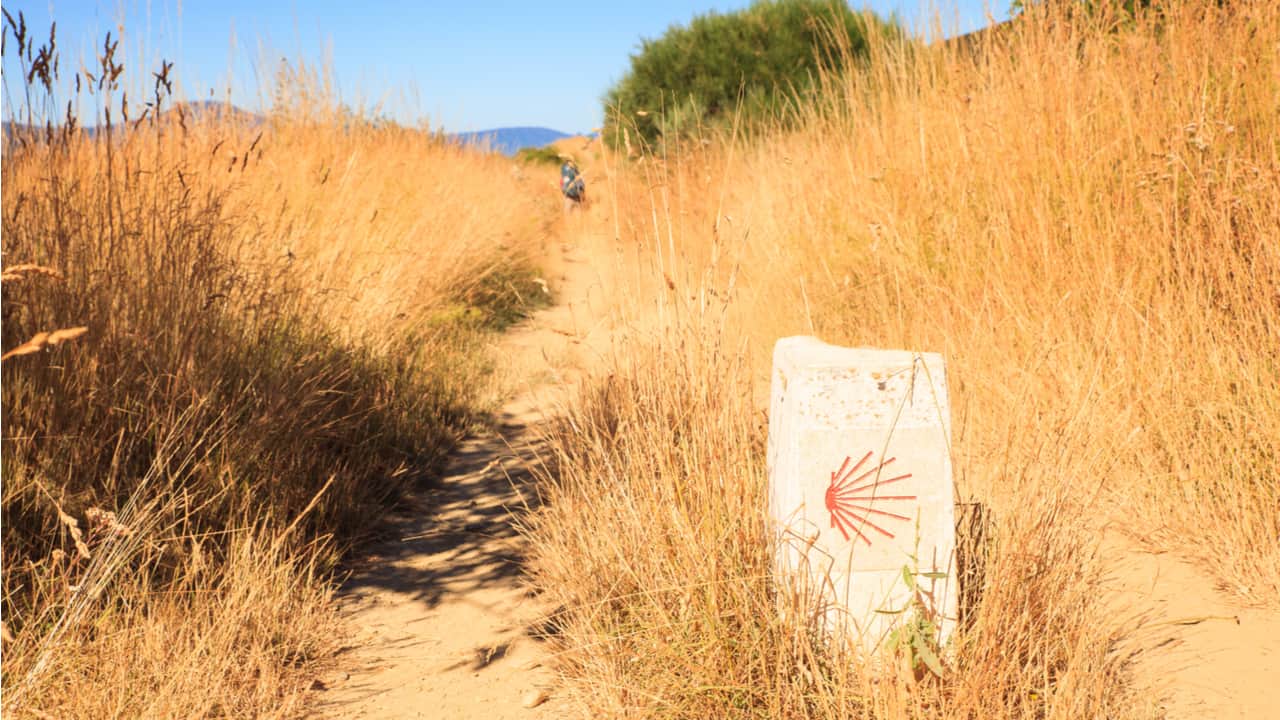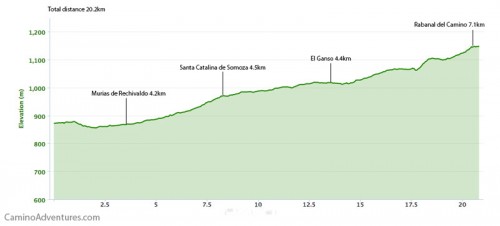Due to its location, Astorga has been an important crossroad and city since Roman times. It sat at the junction of two main Roman roads, the Via Traiana from Bordeaux and the Via de la Plata from Merida.
There is a legend that the city was an episcopal see founded by St James; it is interesting to note that before the remains of St James were discovered at Santiago there is some evidence of a Cult of St James in this part of Northern Spain.
However historical records do show a Bishop existed here in the 3rd century. As it was a Swabian city it was destroyed by the Visigoths after their victory at the battle of Orbigo that’s mentioned in the previous post.
Albergue Siervos de Maria, Plaza San Francisco, 3, association, €5, 156 beds, K, W, D, Cred, @, Bike, Tel: 987 616 034, Web: , open all year.
Albergue de Peregrinos San Javier, Portería, 6, private, €8, 95 beds, W, D, K, B, @, Bike, Tel: 987 618 532, open Apr to Dec.
Albergue Camino y Via, just before Astorga, private, €6, 22 beds, W, D, K, V, B, @, Tel: 987 615 192
The city later flourished under the Visigoth rule, but was once again destroyed by Muslim invaders in 714. Around 850 it was reconquered, by Ordono I, and became a Christian stronghold, and was once again fortified.
The city was one of the few places in Spain where Jews had the same rights as the local population and were integrated into all aspects of the city life, even participating in the nightly patrols; this lasted until 1492 the date of the Jewish expulsion from Spain.
Astorga has a long tradition of aiding pilgrims, at one time there were twenty-one hospices located here, second only to Burgos. Unlike other towns and cities Astorga provided shelter in their albergues to the homeless and indigent.
There was a problem along the Camino Frances of the homeless continually walking the route and staying in pilgrim hospices. Some places took measures to discourage this practice, however in the 16th century as the popularity of the pilgrimage declined several hospices in Astorga agreed to house the homeless.
There is evidence of confraternities selling off land during the 18th century to pay for this continued practice.
The current Astorga Cathedral and Museum was started in 1471 and was built over an earlier church that stood from 1069. However there have been many restorations and repairs over the years for example the south façade is 18th century, this and other areas were damaged by the Lisbon earthquake of 1755.
There are two main areas of the cathedral that should not be missed:
The west façade, which was finished in 1704, simulates a Baroque retablo, as is often the case with churches from this period it can be overpowering – it is designed in that manner.
Inside the main retablo was designed by a disciple of Michelangelo, Gaspar Becerra, is one of the best Renaissance retablos you will see along the Camino Frances.
Unfortunately, the choir stalls are generally closed to the public. However, if you have a good zoom on your camera you can see the incredible detail of the carvings that mainly censure moral abuse using anthropomorphic animals – there is even one that censures smoking only twenty years after tobacco was brought to Spain by Columbus.
The Cathedral Museum is located beside the cloister, which is worth visiting anyway, it houses many of the older statues that pre-date the current cathedral.
Many valuable pieces from local churches along the way have made their way here over the centuries: an ivory Christ with painted blood was moved here from Rabanal, there is a good collection of Romanesque Virgins, and the Mozarabic chest of San Genadio circa 900 donated by Alfonso III. There is also a collection of St James as the pilgrim and the Moor slayer.
Antonio Gaudi’s amazing neo-Gothic Bishop’s Palace is designed to take your breath away, although called the Bishop’s Palace it has never housed a Bishop. Since 1963 it has been the home of the Museum of Pilgrimage, sometimes referred to as the Museum of the Ways. Even if you don’t visit the museum, the building itself is a must-see.
The Church of St Martha looks like it could be the location of a film set in an old cowboy movie with its plain façade and three bells ready to ring out at the top. The church was built in the 16th century over an earlier structure.
Inside there is a good quality 18th-century retablo. However, perhaps the most interesting sight is attached to the side of the church, where there is a small 14th-century prison cell where it is said local prostitutes were imprisoned.
There is a legend that pilgrims fed the prisoner through a small hole in the door as an act of charity, however, there is an interesting inscription that reads: “Consider how I have been judged, for your judgment will be the same: me yesterday, you today.”
The other sights worth seeing in Astorga include: the Baroque Façade of the city hall, the city walls as some parts are still 9th century, and the Monastery of San Francisco.
Money – before leaving Astorga have enough cash for two days as it is unlikely you will have access to an ATM until Ponferrada.
Today’s Walk: 20.2 km (12.5 mi)
Take food and fill your water bottle before leaving Astorga. It is only 20.2km to Rabanal; however, it is 20.2km uphill all day. Make sure you have money to last two days until Ponferrada.
There are a few villages where you will certainly get water, but food cannot be guaranteed until Rabanal, except during the summer months.
Underfoot the route is easy walking mostly along an old rarely used asphalt road. There is lots of tree cover during the day as you walk up into the Leon Mountains.
There are many grass fields where it is pleasant to stop for lunch and rest if you are walking through the mid-day sun.
The route rises by 250 meters (820 feet) during this day, however by the end it feels like much more, this and the following two days can feel fairly strenuous.
The only problem with dogs was encountered along this part of the route in the village of El Ganso. To avoid them, walk along the road rather than the path that goes through the center of the village.
In Rabanal you will have the choice of two great Albergues. One is private at the bottom of the village and the other is run the UK Confraternity of St James. I have stayed in the latter twice and highly recommend it.
Click to read a post of one of the wardens at Rabanal del Camino.
Valdeviejas
1 km (0.6 mi), no services
Albergue Municipal Ecce Homo, on the right after Hermitage, municipal, €5, 10 beds, K, V, Tel: 620 960 060, open Mar to Oct inc.
Only one kilometer (0.6 mi) from Astorga, it is a small village with only 145 inhabitants and a relativity new albergue.
The parish church is dedicated to San Veresimo who the village was once named after. In the 15th century, there was a pilgrim’s hospital here named after its founder Sancha Perez, however, the village holds little for the pilgrim of today.
Murias de Rechivaldo
3.2 km (2 mi), water, bar,
Albergue Municipal, Carretera Santa Colomba, €4, 20 beds, W, K, Bike, Tel: 987 651 150, Web: http://www.muriasderechivaldo.com/ Open Apr to Oct.
Albergue Las Aguedas, c/ Camino de Santiago, 52, private, €10, 40 beds, K, W, D, M, B, Tel: 636 067 840, Web: www.lasaguedas.com, open Mar to Nov inc.
Alb. Hosteria Casa Flor, Carretera Santa Colomba, 54, private, €10, 15 beds, B, M, @, Bike, Tel: 609 478 323, Web: www.hosteriacasaflor.com, open: check website.
Murias is a typical Maragato village. The Maragato have been denied recognition as an ethnic population in Spain, they were once known as entrepreneurs and traveling people who made and sold handicrafts. They were distinguished by their unusual dress.
The 18th-century village church is dedicated to San Esteban, its two interesting features are a statue of San Roque as a pilgrim and a relief of the Virgin del Pilar over the main entrance.
Virgin del Pilar is another name for the Virgin Mary which is strongly connected to St James. It is said that the Virgin appeared to Santiago when he was preaching and trying to convert the local population in Zaragoza.
Due to having so few converts James became disheartened and was praying beside the river when Mary appeared to him atop a pillar accompanied by angels. Mary assured James that the local people would eventually convert and their faith would be as strong as the pillar she stood on. She left the pillar and told James to build a church on that spot.
Santa Catalina de Somoza
4.5 km (2.8 mi), water, bar
Hospederia San Blas, c/ Real, 11, private, 5, 20 beds, M, W, D, V, @, Bike, Tel: 987 691 411, Web: , open all year.
Albergue El Caminante, c/ Real, 2, private, €6, 16 beds, W, D, M, @, Bike, Tel: 987 691 098, Web: www.elcaminante.es, open all year.
Santa Catalina is a tiny village of only 59 inhabitants. The village was well known in the middle ages for its hospitality to pilgrims, today it is one of the many villages that will often leave no impression on the passing pilgrims.
The parish church is dedicated to Santa Maria and inside it has a statue of Saint Blase one of the saints associated with the welfare of pilgrims.
El Gamso
4.4 km (2.5 mi), water, bar
Albergue Gabino, Calle Real, private, €8, 30 beds, W, D, K, @, Bike, Tel: 660 912 823, open Easter to Nov inc.
El Ganso with a tiny population of 36 survives due to the Camino. One of the two bars in the village is well photographed due to it American Cowboy theme – it is called the Cowboy Bar.
You could easily imagine the village as being uninhabited as you walk into it with its gravel roads, ruined walls, and straw roofs. Tomorrow we will see more villages that are coming back to life after having been abandoned in the past.
The local church is dedicated to St James, who is also the patron saint of the village, inside there is a 16th-century statue of him in pilgrim dress.
There was once a small 12th-century church and pilgrim’s hospital here run by the Benedictine’s and a small monastery was built in the 13th century, however, nothing remains of either, but it illustrates the ancient link to the Camino.
At you approach Rabanal on the left is the Hermitage del Santo Cristo de la Vera Cruz and at the entrance to the village, on Calle Mayor, is the 18th century Hermitage of San Jose which has images of St James along with St Joseph and St Barbara.
Rabanal del Camino is a 7.1-km (4.4 mi) walk from El Gamso. There, you’ll find water, a bar, a cafe, and a shop.
Key: W = Washing, D = Drying, M = Menu, @ = Internet, K = Kitchen, B = Breakfast, V = Vending, Cred = Credential
Does this page need any updates or new albergues added? Please let us know in the comments below.

I love hiking, backpacking, and camping. From the Camino de Santiago to the West Highland Way in Scotland or simply a great day hike on the weekend. Hiking refreshes me, my mind, and keeps my body reasonably fit. So far I have walked three Camino routes and many other long distance hikes in the UK, Canada, and around the rest of Europe. One of the best was my hike up Ben Nevis.

